These Fresno residents maintain tradition of growing cempasúchil flowers
The Fresno Metro Ministry community garden at the corner of Poplar and Belmont avenues –filled with the vibrant orange color in different shades of the cempasúchil flower (called marigold in English)– can be described as a hidden gem under Highway 180 in the city of Fresno.
Area residents such as Rafael Reyes, Damaso Liera, Isabel Patricio, or husband and wife Alejandra Garcia and Alejandro Torres are just a few of the community garden members who have plots filled with the cempasúchil flower for personal use as the Día de los Muertos (Day of the Dead) celebration approaches.
“People come here. From here we take it home to arrange our altars,” said 63-year-old Reyes, originally from the state of Colima, Mexico.
Reyes has two plots full of cempasúchil, a flower he has been growing for five years during this season.
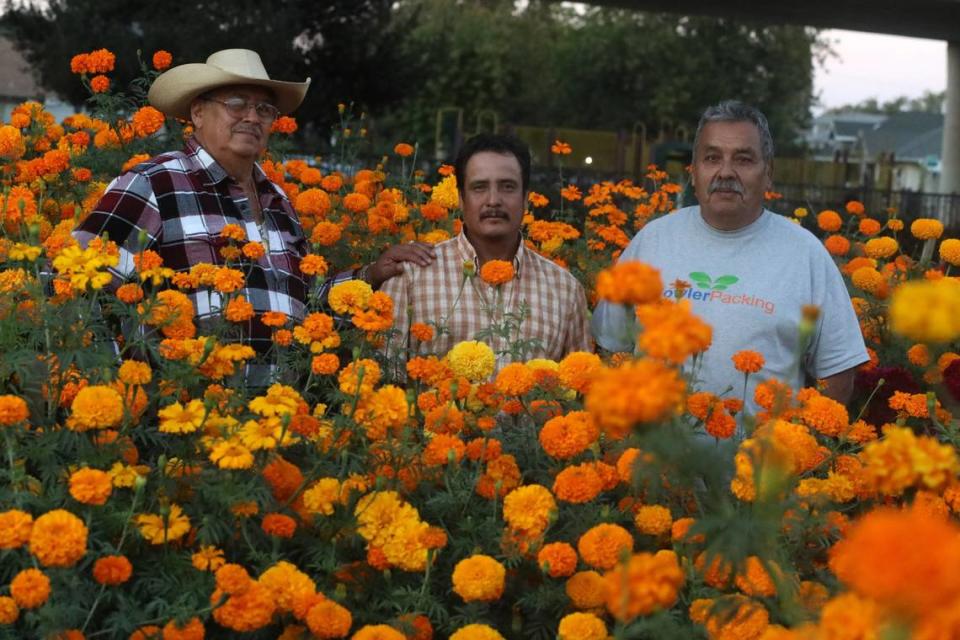
The cempasúchil flower –which is native to Mexico– symbolizes the Día de los Muertos in Mexico, due to its orange color that comes in various shades and its aroma, which are representative elements of the offerings for the dead.
The Día de los Muertos celebration is a Mexican tradition dating back thousands of years and is not the Mexican version of Halloween. Festivities are held during the first two days of November (November 1, All Saints’ Day, and November 2, All Souls’ Day) in towns and cities throughout Mexico to remember those who have died with ofrendas (altars), family gatherings and visits to their graves.
Like Reyes, many of the community garden members grow the cempasúchil flower whose name comes from the Nahuatl “Cempohualxochitl” and means “twenty flowers” or “several flowers” by tradition.
“To celebrate the Día de los Muertos, that’s why all this is done, a tradition,” said Reyes,
For Damaso Liera, planting cempasúchil brings back fond memories of his country.
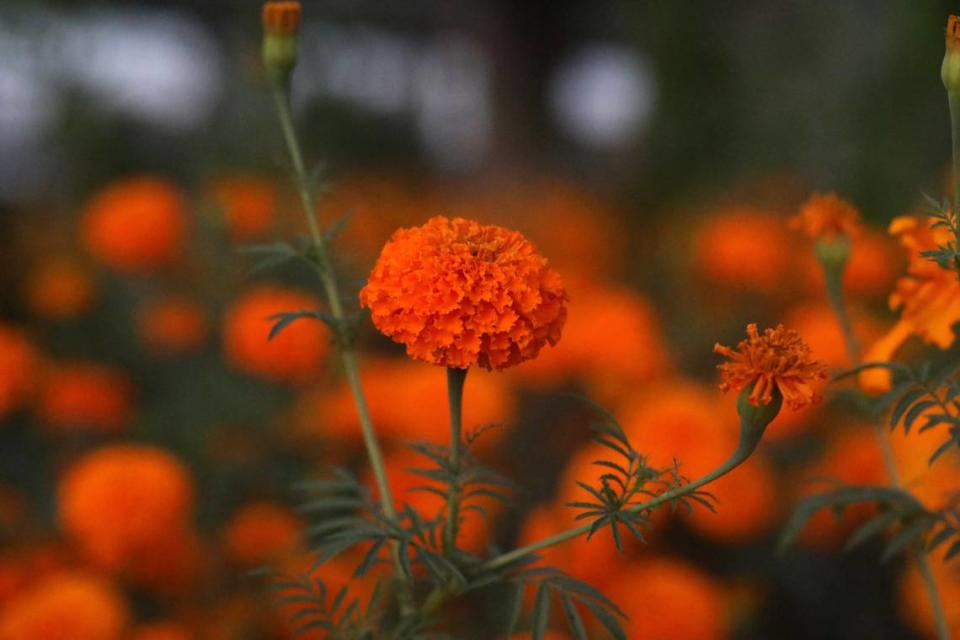
“The same tradition that one brings from Mexico from generation to generation, the grandparents, the parents,” said Liera who is originally from the state of Michoacán. “That’s why we plant and cultivate it year after year, it’s for All Souls’ Day.”
For them, it is a way to keep alive one of the traditions of their hometowns that is used during the Día de los Muertos festivities in Mexico.
Isabel Patricio, originally from the state of Guerrero, came to the community garden on Tuesday afternoon (October 24) to pick several cempasúchil flowers from her plot to put them to her saints.
“We celebrate the day of San Juditas Tadeo, on the 28th of this month and this is also the traditional flower that is put there,” said Patricio, who has been planting cempasúchil there for four years.
Patricio said that for her it is important to plant cempasúchil because “it comes from my roots, which are my parents, they planted them back in Guerrero.”
“My mom was dedicated to planting the flower and selling it for the Día de los Muertos which is very busy there in Mexico, well in Guerrero in my state,” she said.
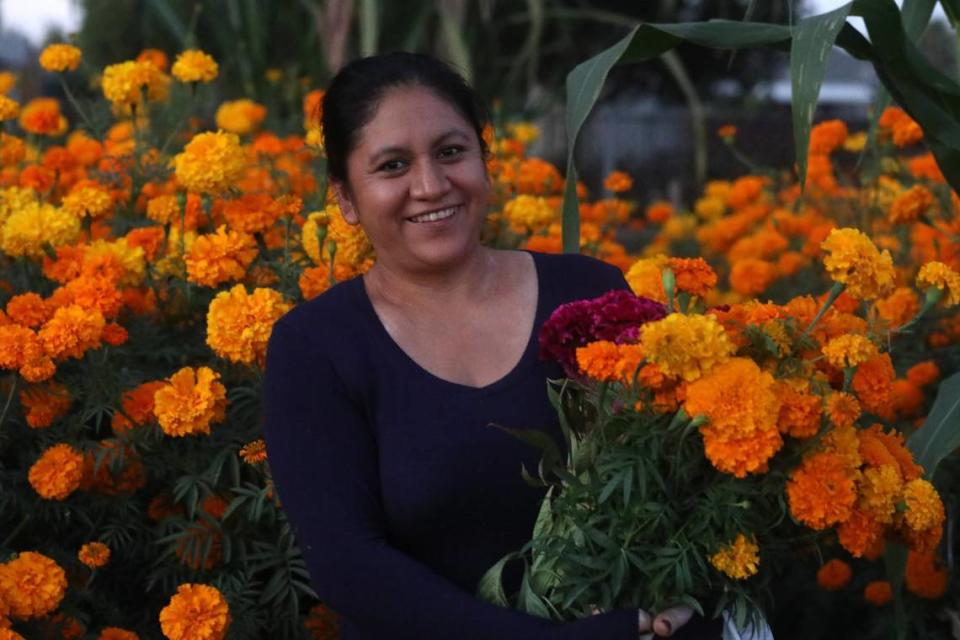
Patricio said that with the flowers they make chains, they put flower pots with flowers, they take them to the tombs, among other things.
“And that’s why I do it too, so as not to lose the tradition, because my children were born here and that’s what I want, that they also carry those roots, that they don’t get lost. Those traditions,” said Patricio
Although there is the noise of the cars passing overhead on the freeway, it is also therapeutic for many to take care of the flowers that they started planting in July of this year.
“You come to leave all the problems here,” said Reyes who daily spends two or three hours in the afternoon in the garden tending to his flowers.
“It looks nice in this area too,” said Alejandro Torres of the flower that adorns the area in the middle of the city.
Torres said: “Somehow you remember that tradition that, somehow, you brought here.”
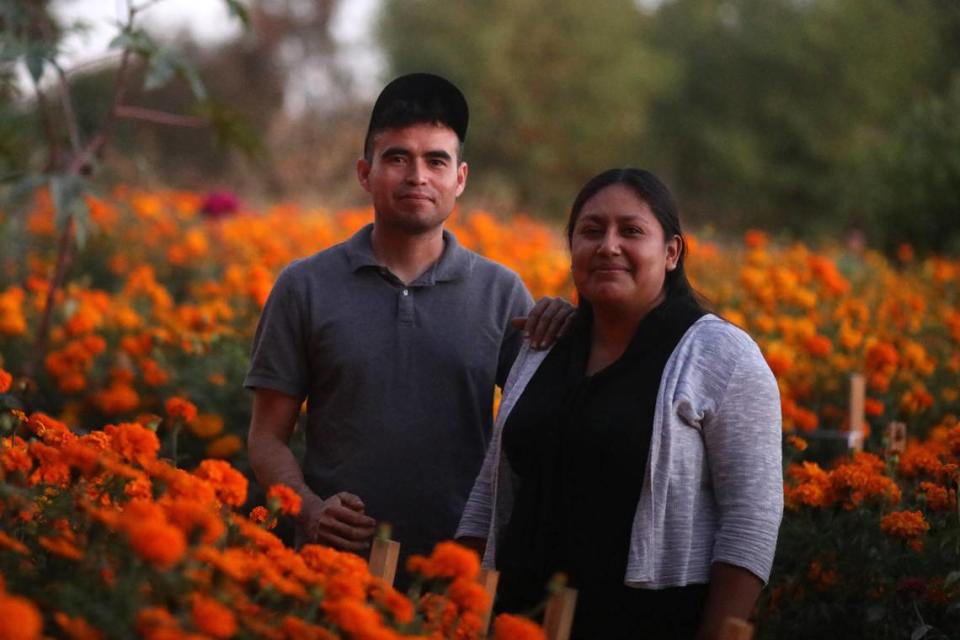
Torres’ wife, Alejandra Garcia, said he loves to be in the garden watering his plants.
Torres, who is originally from Michoacán, said that “its color in the first place, its color looks so beautiful” is what he likes most about the cempasúchil.
Torres and García said that on the last day of October and the first day of November, many people –friends, family, and strangers– come to the community garden looking for the cempasúchil flower for their ofrendas and altars.
“Those two days a lot of people come,” Garcia said. “Others who are looking for the flower also come.”
“They see what’s here,” García said.
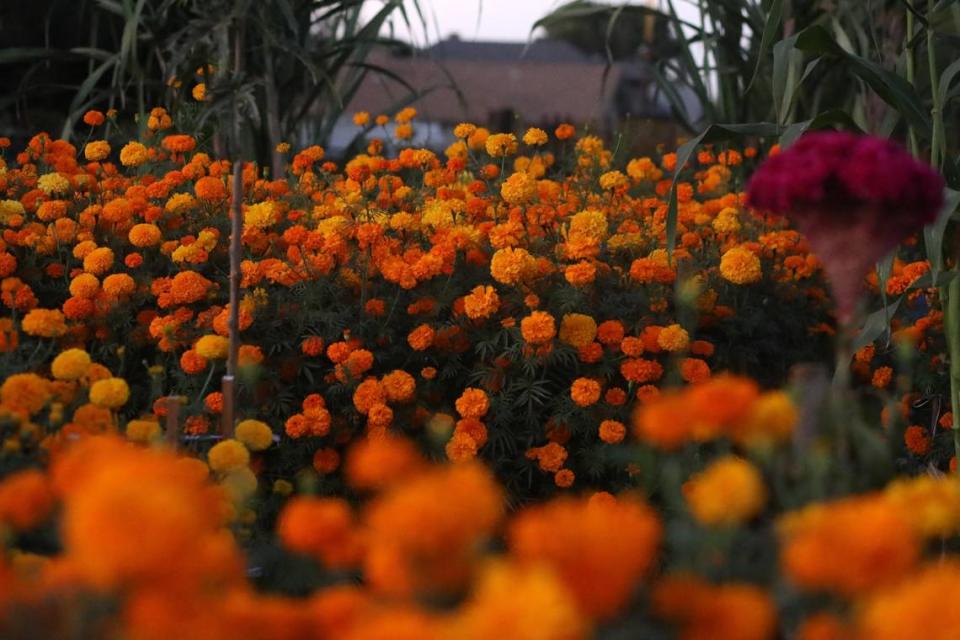
Others also continue the tradition
About 9 miles southeast of the community garden, Margarita Amador has been growing cempasúchil in her backyard for the past five years,
“I plant them with a lot of love. I like the plants, and I plant them out of tradition,” said Amador, who lives at North and Clovis avenues in Fresno.
One of the things Amador likes about the flower is its scent.
For Amador, who is originally from the state of Oaxaca, Mexico, the cempasúchil flower “has a very important sentimental value” and planting it now is a tradition to honor loved ones who have passed away.
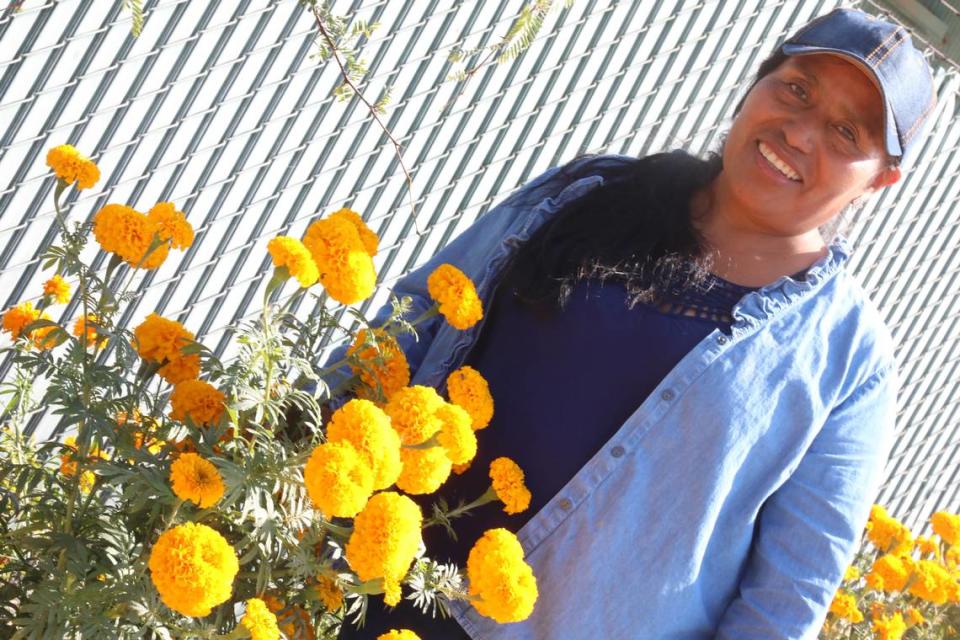
“And since my mom and dad are no longer alive, I try with love to plant the flowers for them on these days,” Amador said.
Before, Amador used to buy the cempasúchil flowers, but since his father and mother passed away “I honor them by planting the plants for them, I plant them for them,” Amador said.
Amador said that, as a farm worker, she also found it difficult to pay the cost of the cempasúchil flower to make her ofrenda during the Día de los Muertos, so she also decided to start planting it for personal use.
In these months, Amador said, “work in the fields goes down.”
This year, Amador, who lives in Fresno, has about 280 cempasúchil flower plants growing not only for personal use but also for sale.
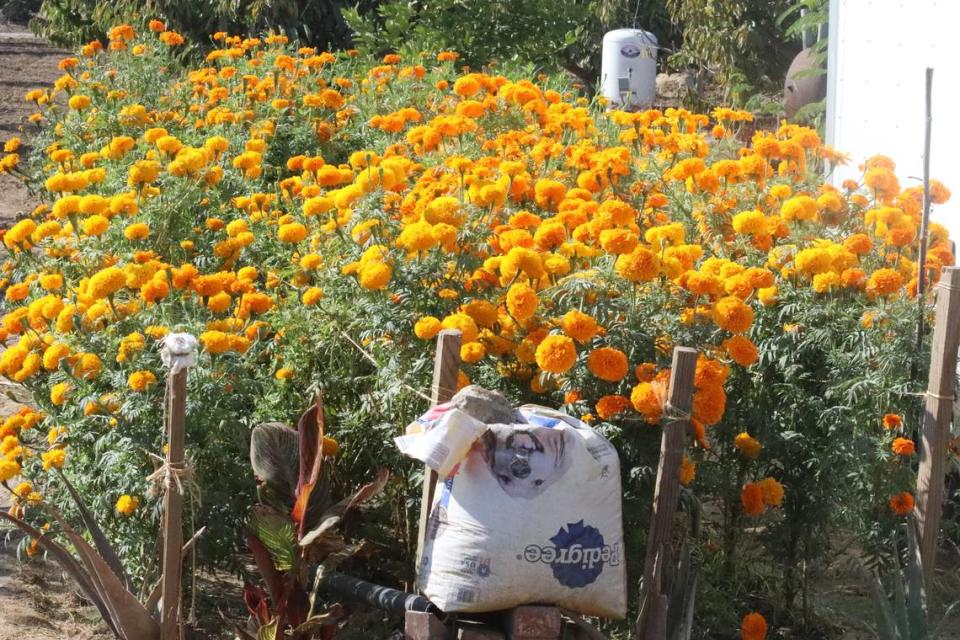
Amador usually begins planting the seeds between June 10 and 25, as it takes about three and a half months for the cempasúchil flower plants to be ready for the Día de los Muertos celebration in November.
The Central Valley has seen an increase in public Día de los Muertos celebrations.
According to the Mexican Government’s Agri-Food and Fisheries Information Service, there are an estimated 35 species of cempasúchil flowers in Mexico out of the 58 species in existence.
The state of Puebla occupies the first place in the production of cempasúchil flower, in 2019 the production in that state exceeded 14 thousand 900 tons, according to the Government of Mexico.

